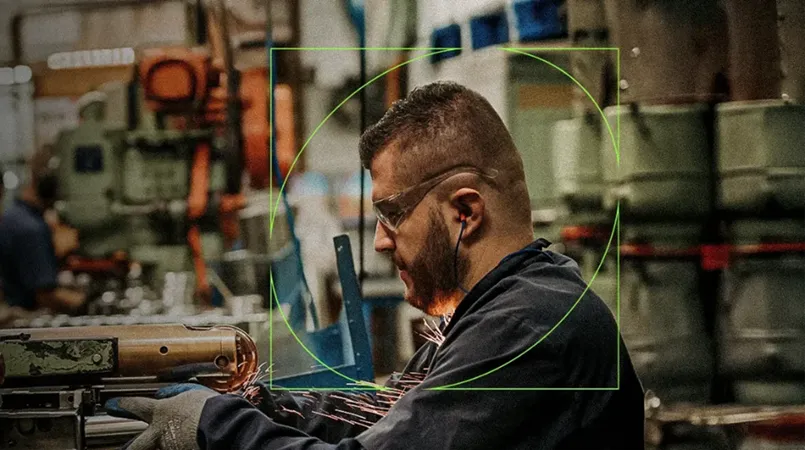Table of Contents
By: Rachel Zoky, CPE
For a company to receive all of the benefits of an ergonomics program, they must not only address the existing equipment and work tasks but also integrate the risk evaluations into their new designs. What good is it to fix a risk factor within a current program, if the next version will have the same problem?
In order to implement this second half of the program effectively, follow these 4 major steps:
- Determine Ergonomics Design Guidelines
- Integrate Ergonomics into the Current Design Process
- Train Relevant Personnel
- Audit Program Health
Step 1: Determine Ergonomics Design Guidelines
Step one should be easy for any company already utilizing The VelocityEHS Industrial Ergonomics System because it includes a set of ergonomics design guidelines for most, if not all, types of the work that engineers will need to evaluate for musculoskeletal disorder (MSD) risks. Therefore, this step can be as simple as enabling all engineers to have an account within The VelocityEHS Industrial Ergonomics System that would allow them to access this resource.
Step 2: Integrate Ergonomics into Your Curren Design Process
Step two will be the most time consuming and complex part of establishing a new process. It starts with an in-depth review of the current design project process to identify when engineers have enough information to make decisions. Then, it follows three major stages for ergonomic design:
- Compiling lessons learned from previous or existing products,
- Evaluating engineering drawings of proposed workstations and equipment, and
- Confirming that built equipment matches any corrections or changes made to the drawings.
Within any engineering procedure, the last 2 stages of the process will have multiple iterations as drawings change and you determine more information about the overall process, but these are the major stages that you will need to track and explicitly include in procedural documents.
Your job is to determine where these 3 stages fit within your company’s current program management procedure, who will be responsible for completing these tasks within each project, and how you will be recording this information. Make this process development collaborative with input from all relevant group leaders. Their involvement will allow you to make more informed decisions on the timing of these steps as well as provide the senior-level support critical for launching a successful new program.
Step 3: Train Relevant Personnel
Step three is the most easily defined since it involves training of all engineers on where the design guidelines come from, how-to use them, and which program design procedural steps require them to consider ergonomics.
This training should start with the conceptual understanding of ergonomics, such as that provided by the eLearning Modules on The VelocityEHS Industrial Ergonomics System. From there, you can include several hands-on examples or mock-ups to show the engineers exactly where and how to measure the correct dimensions for hand working height, horizontal reach, screen heights, etc.
Overall, this training stage should include a combination of classroom explanations and on-site coaching to make sure that the engineers are comfortable with performing the required steps.
Step 4: Audit the Health of Your Program
Finally, you’ve reached step four. This step happens to be the most important for ensuring that you have created an effective and healthy program.
After the ergonomics design process has been functioning long enough for new projects to have records of their activities, you need to create an auditing process to verify that all procedural steps are being followed and that there are no gaps in process execution. If you do identify any gaps at this stage, you’ll need to develop and prioritize follow up actions to address them.
Let VelocityEHS Help!
VelocityEHS is just the partner you’re looking for to implement a successful ergonomics process. Our powerful VelocityAI-driven SaaS global enterprise ergonomics solutions deliver continuous improvement and are backed by the industry’s largest team of board-certified ergonomists.
We understand that it’s not just doing ergonomics assessments that matters; it’s using the assessments to improve workplace safety. That’s why the 3D Model for Motion Capture in our VelocityEHS industrial ergonomics software provides the most comprehensive MSD risk assessment available, incorporating automatic scoring of wrist bending and back twisting, and even capturing data from hidden body segments. You’ll also be able to conduct assessments from anywhere using a mobile device and then rely on powerful AI capabilities that help you identify risks and root causes and select better controls from expert-curated drop-down menus, so you can put your assessments to their intended use. You’ll have greater confidence in your assessments and overall ergonomics process. The design guidelines in our software also help ensure that you’re reducing potential for MSDs from the very beginning.
And those are just some of the ways we can support you – in fact, Industrial Ergonomics is just one of four world-class solutions on our VelocityEHS Accelerate ® Platform, along with Safety, Chemical Management, and Operational Risk, all on one platform with an integrated user experience. Contact us today to learn more about how we can help you improve worker health and safety, or better yet, schedule a demo.

